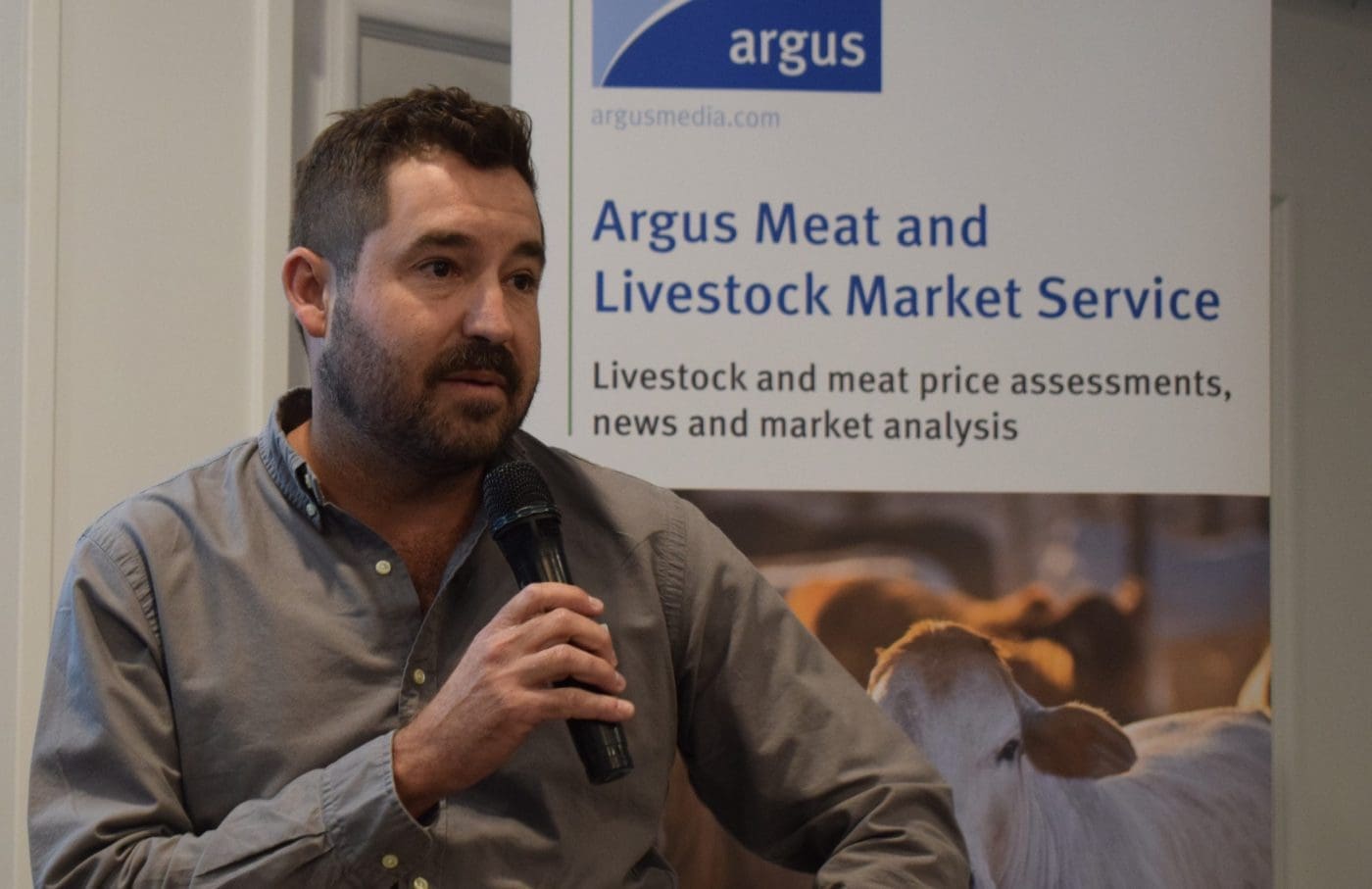A NEW forward pricing tool for the Australian cattle industry appears to be attracting plenty of interest, with a number of industry participants starting to sign on.
The swaps are brokered by United States financial services company StoneX, which launched its price risk management tool for cattle in February last year and made its first trade in October.
Opportunities presented by the new tool were discussed at the Argus Media Meat and Livestock forum in Toowoomba last week – which heard from market analysts, lot feeders and StoneX’s Sydney-based livestock and commodities broker Tim Jude.
The company has set a target of on-boarding 50 industry participants, which Mr Jude said it was on the way to achieving.
“We are probably halfway towards achieving our target and we hope to achieve it by the by the end of this year,” he said.
Liquidity is key to the success of the StoneX tool and Mr Jude said the company was hoping its current participants will start trading larger volumes.
“At the moment, we are getting people trading smaller volumes to trial the tool and we hope those volumes increase over time,” he said.
“With the number of participants we currently have, there is enough volume being traded to make it a functioning market. But if we reach our target, we will have a lot of liquidity, anybody would be able to trade on any day and people will be able to trade large numbers.”
What are cattle swaps?
Similar-but-different to futures contracts, the StoneX Australian Feeder Cattle Swap tool is a forward pricing mechanism for the cattle industry.
Settling against a feeder cattle index, provided by Argus Media, StoneX provides a forward pricing curve, which allows a buyer and seller to lock in a contract in advance of the physical transaction. Both parties remain anonymous.
The transactions are cash-settled, meaning the buyer or the seller have to pay the difference between the price negotiated at the swap and the feeder cattle index on the day – and does not have a physical delivery mechanism.
In his presentation, Mr Jude providing a hedging example for commercial cattle producers.
“If you are a cattle producer using the swap, your main risk is that the price will fall over time and you will owe money on settlement,” he said.
“What you could do is sell the swap in the same month you are expecting to sell those physical cattle. Say you are turning cattle off in September, you are afraid the price is going to come off between now and then, you can sell the swap at the price today – then the lower price you get in September is offset by the gain you make on your swap.”
Opportunities in swaps
Darling Downs lot feeder Mort & Co was part of the first cattle swap last year and its livestock manager Brett Campbell was on a panel discussion at the conference. Mr Campbell said forward pricing had been hard to execute in the past.
“As an industry, we have been looking at forward contracting for a long time and we have tried to come up with mechanisms where it is reflective of the market on the day of delivery,” he said.
“You can pick a point on the horizon and say ‘there is a price for delivery in September’, someone inevitably gets it wrong, there is always a winner and a loser and it is rare that the price is close enough for both parties to walk away reasonably happy.
“If we can work towards something that allows producers or lot feeders to mitigate risk, be paid on the market of the day and eliminate that ‘win-or-lose’ situation, that is what we would like to see.”
Fellow Darling Downs lot feeder and recently elected Cattle Australia board member Bryce Camm said an effective forward pricing mechanism presented big opportunities to commercial breeders.
“Price-risk in general, the more that we can lock your price in and your price out, than feedlots can be a printing press for money,”
“I think the options for those invested for the long-term, the breeder, is more excited. If you are a breeder, it is really a two-year venture and a big invested that is swinging around price risk.”




Sounds promising….” Settling against a feeder cattle index, provided by Argus Media” needs to be clearer to avoid basis risk and particularly so as there is no delivery mechanism, which ultimately keeps futures markets honest or reflective of the underlying commodity.